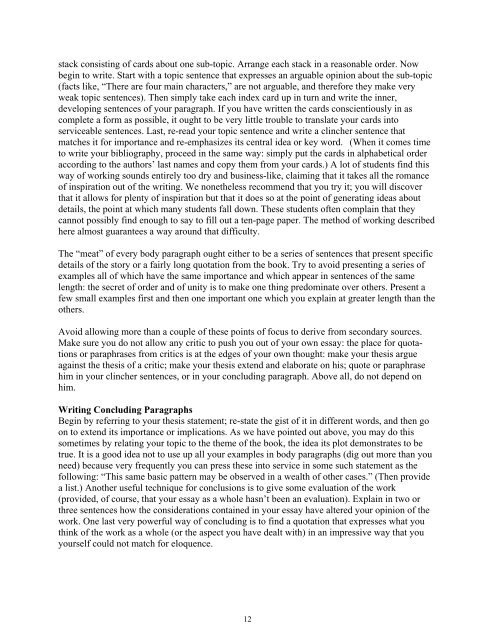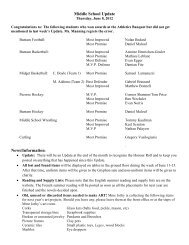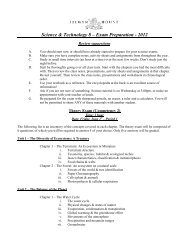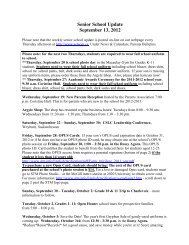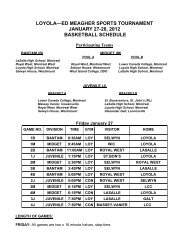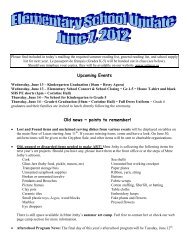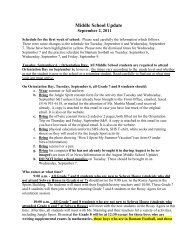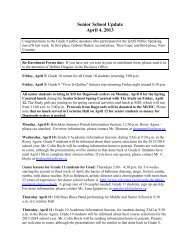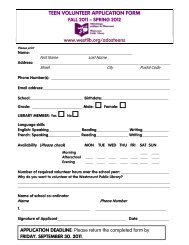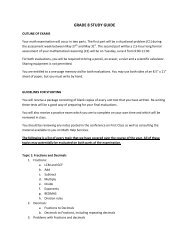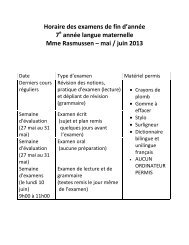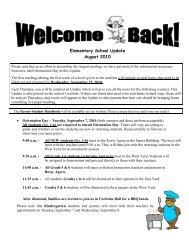Senior English Critical Writing Handbook - Selwyn House School
Senior English Critical Writing Handbook - Selwyn House School
Senior English Critical Writing Handbook - Selwyn House School
You also want an ePaper? Increase the reach of your titles
YUMPU automatically turns print PDFs into web optimized ePapers that Google loves.
stack consisting of cards about one sub-topic. Arrange each stack in a reasonable order. Nowbegin to write. Start with a topic sentence that expresses an arguable opinion about the sub-topic(facts like, “There are four main characters,” are not arguable, and therefore they make veryweak topic sentences). Then simply take each index card up in turn and write the inner,developing sentences of your paragraph. If you have written the cards conscientiously in ascomplete a form as possible, it ought to be very little trouble to translate your cards intoserviceable sentences. Last, re-read your topic sentence and write a clincher sentence thatmatches it for importance and re-emphasizes its central idea or key word. (When it comes timeto write your bibliography, proceed in the same way: simply put the cards in alphabetical orderaccording to the authors’ last names and copy them from your cards.) A lot of students find thisway of working sounds entirely too dry and business-like, claiming that it takes all the romanceof inspiration out of the writing. We nonetheless recommend that you try it; you will discoverthat it allows for plenty of inspiration but that it does so at the point of generating ideas aboutdetails, the point at which many students fall down. These students often complain that theycannot possibly find enough to say to fill out a ten-page paper. The method of working describedhere almost guarantees a way around that difficulty.The “meat” of every body paragraph ought either to be a series of sentences that present specificdetails of the story or a fairly long quotation from the book. Try to avoid presenting a series ofexamples all of which have the same importance and which appear in sentences of the samelength: the secret of order and of unity is to make one thing predominate over others. Present afew small examples first and then one important one which you explain at greater length than theothers.Avoid allowing more than a couple of these points of focus to derive from secondary sources.Make sure you do not allow any critic to push you out of your own essay: the place for quotationsor paraphrases from critics is at the edges of your own thought: make your thesis argueagainst the thesis of a critic; make your thesis extend and elaborate on his; quote or paraphrasehim in your clincher sentences, or in your concluding paragraph. Above all, do not depend onhim.<strong>Writing</strong> Concluding ParagraphsBegin by referring to your thesis statement; re-state the gist of it in different words, and then goon to extend its importance or implications. As we have pointed out above, you may do thissometimes by relating your topic to the theme of the book, the idea its plot demonstrates to betrue. It is a good idea not to use up all your examples in body paragraphs (dig out more than youneed) because very frequently you can press these into service in some such statement as thefollowing: “This same basic pattern may be observed in a wealth of other cases.” (Then providea list.) Another useful technique for conclusions is to give some evaluation of the work(provided, of course, that your essay as a whole hasn’t been an evaluation). Explain in two orthree sentences how the considerations contained in your essay have altered your opinion of thework. One last very powerful way of concluding is to find a quotation that expresses what youthink of the work as a whole (or the aspect you have dealt with) in an impressive way that youyourself could not match for eloquence.12


